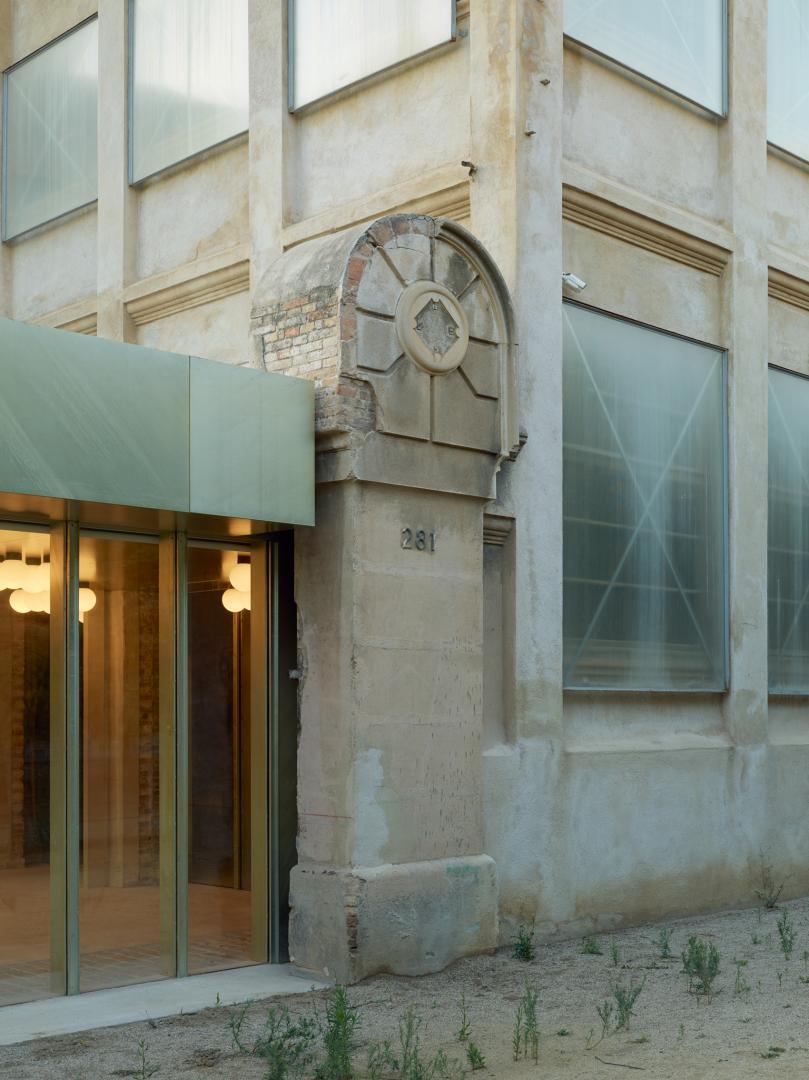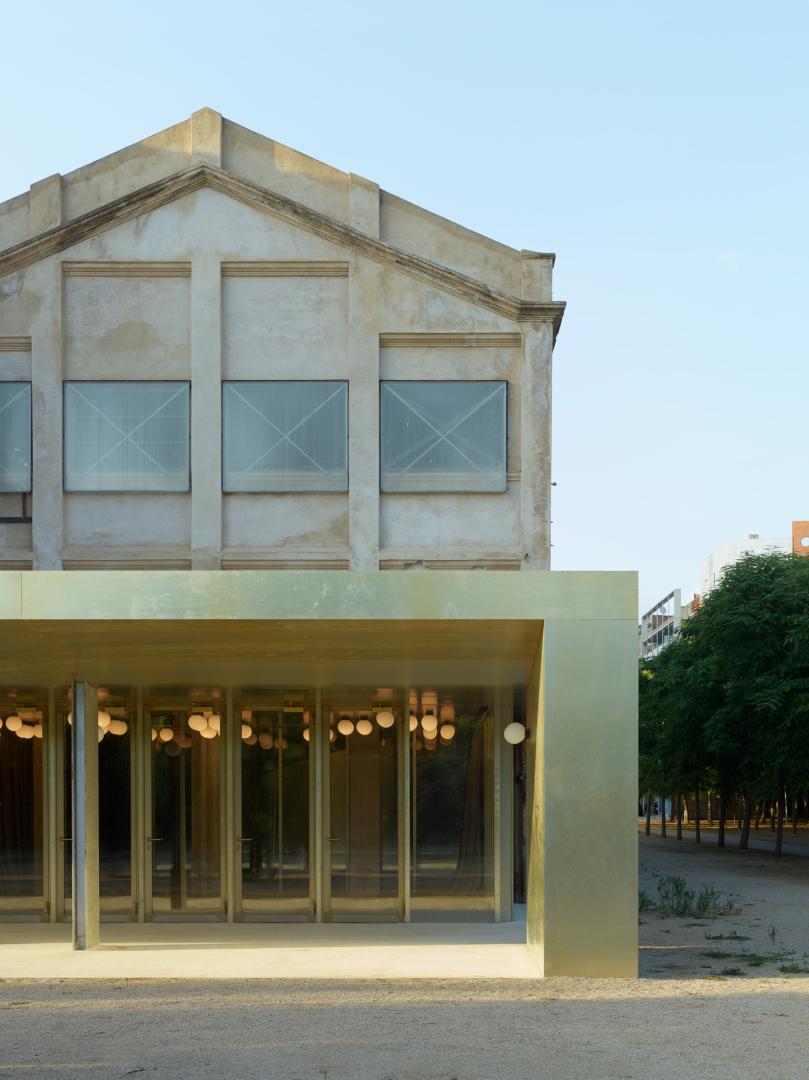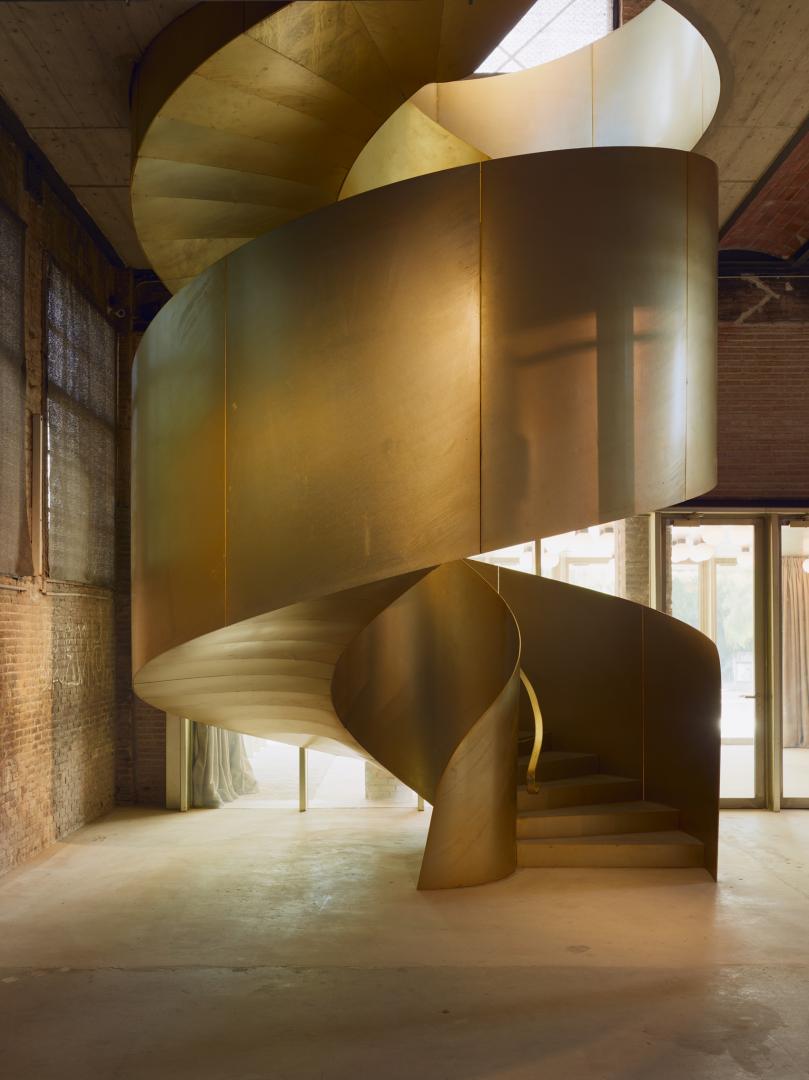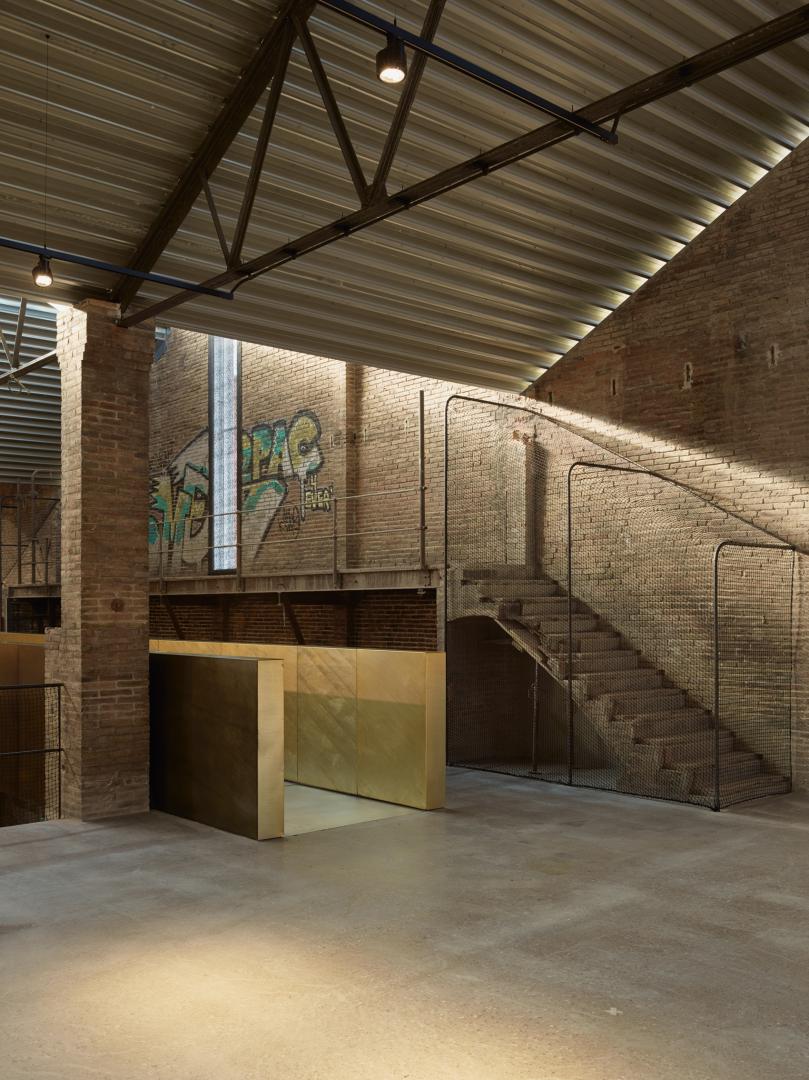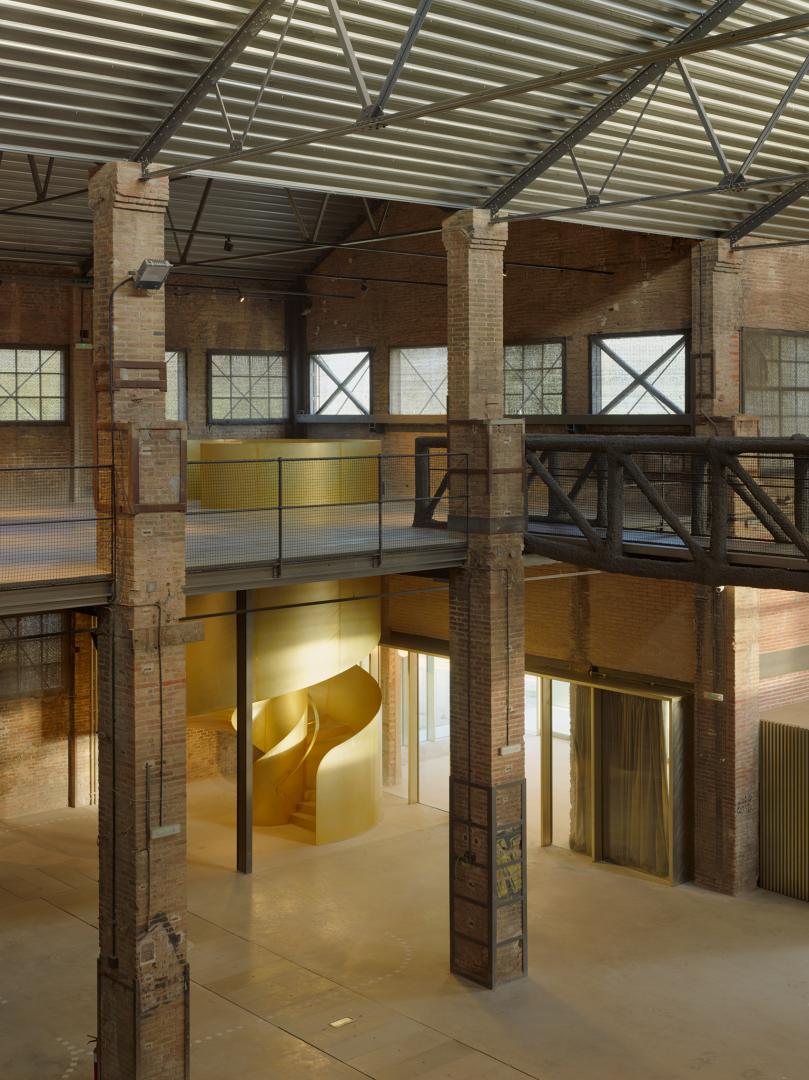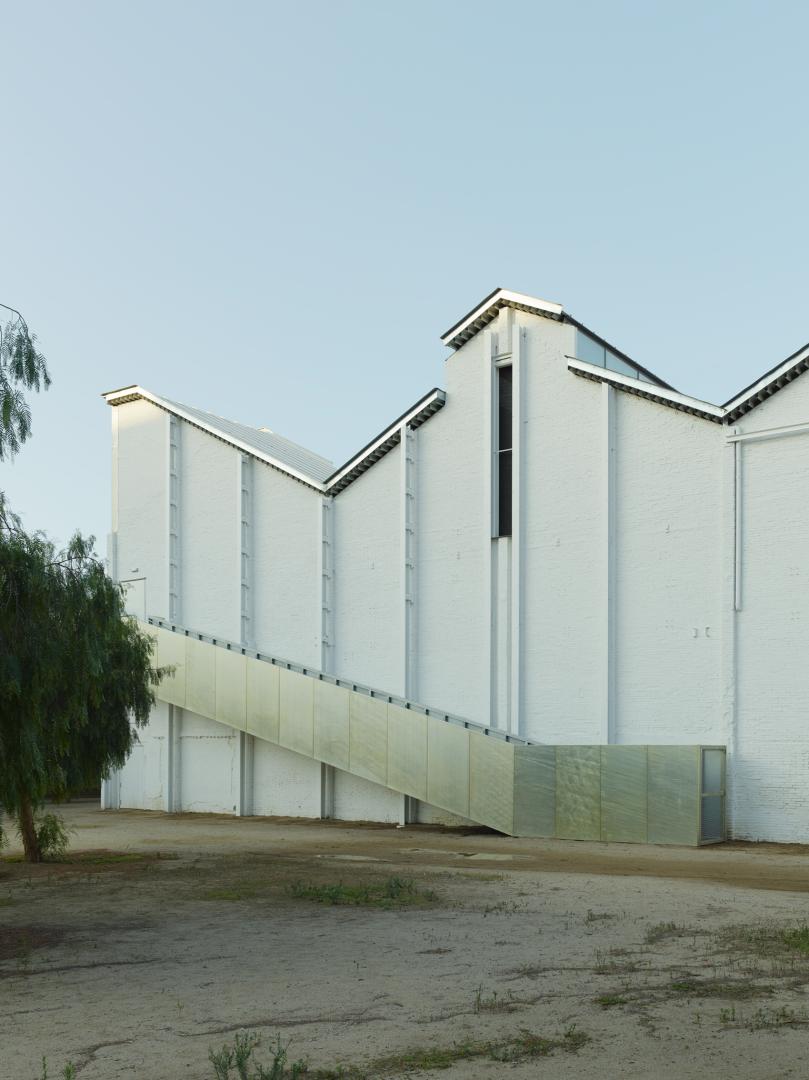Oliva Artés Museum
Basic information
Project Title
Full project title
Category
Project Description
The project, due to the economic reality it has faced, has become a sequence of small provisional interventions which, little by little, end up forming the final project. The existing building, which was part of an old factory from 1920, contained some fascinating interior brick textures, probably more interesting than its exterior facades, which historically had had other volumes attached.
Geographical Scope
Project Region
Urban or rural issues
Physical or other transformations
EU Programme or fund
Which funds
Description of the project
Summary
The project, due to the economic reality it has faced, has become a sequence of small provisional interventions which, little by little, end up forming the final project. The project, even though it is far from being the original one because it was conceived all at one, acquires a certain complexity due to its own precariousness and disorder, building a new way of rethinking this kind of interventions.
The existing building, which was part of an old factory from 1920, contained some fascinating interior brick textures, probably more interesting than its exterior facades, which historically had had other volumes attached.
The original project is still preserved in some fundamental ideas. All the elements that were necessary for the good functioning of the museum are attached to the exterior of the building: the elevator, which reminds us of the chimney the factory never had, lineal stairs, provisional restrooms and even a generous entrance porch which opens to the park without modifying the original architecture. A small café will allow domestic management of the museum and will serve the users of the park. The staircase, which was initially planned to occupy the central space with a certain protagonism, is placed in a corner near the cafeteria, trying to occupy as little space as possible.
All the pieces are finished in iron plating of a certain golden tone, which somehow alludes to the past epoch in which the factory was originally built.
Key objectives for sustainability
The project, due to the economic reality it has faced, has become a sequence of small provisional interventions which, little by little, end up forming the final project. The project, even though it is far from being the original one because it was conceived all at one, acquires a certain complexity due to its own precariousness and disorder, building a new way of rethinking this kind of interventions.
The existing building, which was part of an old factory from 1920, contained some fascinating interior brick textures, probably more interesting than its exterior facades, which historically had had other volumes attached.
The original project is still preserved in some fundamental ideas. All the elements that were necessary for the good functioning of the museum are attached to the exterior of the building: the elevator, which reminds us of the chimney the factory never had, lineal stairs, provisional restrooms and even a generous entrance porch which opens to the park without modifying the original architecture. A small café will allow domestic management of the museum and will serve the users of the park. The staircase, which was initially planned to occupy the central space with a certain protagonism, is placed in a corner near the cafeteria, trying to occupy as little space as possible.
All the pieces are finished in iron plating of a certain golden tone, which somehow alludes to the past epoch in which the factory was originally built.
Key objectives for aesthetics and quality
The project, due to the economic reality it has faced, has become a sequence of small provisional interventions which, little by little, end up forming the final project. The project, even though it is far from being the original one because it was conceived all at one, acquires a certain complexity due to its own precariousness and disorder, building a new way of rethinking this kind of interventions.
The existing building, which was part of an old factory from 1920, contained some fascinating interior brick textures, probably more interesting than its exterior facades, which historically had had other volumes attached.
The original project is still preserved in some fundamental ideas. All the elements that were necessary for the good functioning of the museum are attached to the exterior of the building: the elevator, which reminds us of the chimney the factory never had, lineal stairs, provisional restrooms and even a generous entrance porch which opens to the park without modifying the original architecture. A small café will allow domestic management of the museum and will serve the users of the park. The staircase, which was initially planned to occupy the central space with a certain protagonism, is placed in a corner near the cafeteria, trying to occupy as little space as possible.
All the pieces are finished in iron plating of a certain golden tone, which somehow alludes to the past epoch in which the factory was originally built.
Key objectives for inclusion
The project, due to the economic reality it has faced, has become a sequence of small provisional interventions which, little by little, end up forming the final project. The project, even though it is far from being the original one because it was conceived all at one, acquires a certain complexity due to its own precariousness and disorder, building a new way of rethinking this kind of interventions.
The existing building, which was part of an old factory from 1920, contained some fascinating interior brick textures, probably more interesting than its exterior facades, which historically had had other volumes attached.
The original project is still preserved in some fundamental ideas. All the elements that were necessary for the good functioning of the museum are attached to the exterior of the building: the elevator, which reminds us of the chimney the factory never had, lineal stairs, provisional restrooms and even a generous entrance porch which opens to the park without modifying the original architecture. A small café will allow domestic management of the museum and will serve the users of the park. The staircase, which was initially planned to occupy the central space with a certain protagonism, is placed in a corner near the cafeteria, trying to occupy as little space as possible.
All the pieces are finished in iron plating of a certain golden tone, which somehow alludes to the past epoch in which the factory was originally built.
Results in relation to category
The project, due to the economic reality it has faced, has become a sequence of small provisional interventions which, little by little, end up forming the final project. The project, even though it is far from being the original one because it was conceived all at one, acquires a certain complexity due to its own precariousness and disorder, building a new way of rethinking this kind of interventions.
The existing building, which was part of an old factory from 1920, contained some fascinating interior brick textures, probably more interesting than its exterior facades, which historically had had other volumes attached.
The original project is still preserved in some fundamental ideas. All the elements that were necessary for the good functioning of the museum are attached to the exterior of the building: the elevator, which reminds us of the chimney the factory never had, lineal stairs, provisional restrooms and even a generous entrance porch which opens to the park without modifying the original architecture. A small café will allow domestic management of the museum and will serve the users of the park. The staircase, which was initially planned to occupy the central space with a certain protagonism, is placed in a corner near the cafeteria, trying to occupy as little space as possible.
All the pieces are finished in iron plating of a certain golden tone, which somehow alludes to the past epoch in which the factory was originally built.
How Citizens benefit
The project, due to the economic reality it has faced, has become a sequence of small provisional interventions which, little by little, end up forming the final project. The project, even though it is far from being the original one because it was conceived all at one, acquires a certain complexity due to its own precariousness and disorder, building a new way of rethinking this kind of interventions.
The existing building, which was part of an old factory from 1920, contained some fascinating interior brick textures, probably more interesting than its exterior facades, which historically had had other volumes attached.
The original project is still preserved in some fundamental ideas. All the elements that were necessary for the good functioning of the museum are attached to the exterior of the building: the elevator, which reminds us of the chimney the factory never had, lineal stairs, provisional restrooms and even a generous entrance porch which opens to the park without modifying the original architecture. A small café will allow domestic management of the museum and will serve the users of the park. The staircase, which was initially planned to occupy the central space with a certain protagonism, is placed in a corner near the cafeteria, trying to occupy as little space as possible.
All the pieces are finished in iron plating of a certain golden tone, which somehow alludes to the past epoch in which the factory was originally built.
Physical or other transformations
Innovative character
The project, due to the economic reality it has faced, has become a sequence of small provisional interventions which, little by little, end up forming the final project. The project, even though it is far from being the original one because it was conceived all at one, acquires a certain complexity due to its own precariousness and disorder, building a new way of rethinking this kind of interventions.
The existing building, which was part of an old factory from 1920, contained some fascinating interior brick textures, probably more interesting than its exterior facades, which historically had had other volumes attached.
The original project is still preserved in some fundamental ideas. All the elements that were necessary for the good functioning of the museum are attached to the exterior of the building: the elevator, which reminds us of the chimney the factory never had, lineal stairs, provisional restrooms and even a generous entrance porch which opens to the park without modifying the original architecture. A small café will allow domestic management of the museum and will serve the users of the park. The staircase, which was initially planned to occupy the central space with a certain protagonism, is placed in a corner near the cafeteria, trying to occupy as little space as possible.
All the pieces are finished in iron plating of a certain golden tone, which somehow alludes to the past epoch in which the factory was originally built.
Learning transferred to other parties
The project, due to the economic reality it has faced, has become a sequence of small provisional interventions which, little by little, end up forming the final project. The project, even though it is far from being the original one because it was conceived all at one, acquires a certain complexity due to its own precariousness and disorder, building a new way of rethinking this kind of interventions.
The existing building, which was part of an old factory from 1920, contained some fascinating interior brick textures, probably more interesting than its exterior facades, which historically had had other volumes attached.
The original project is still preserved in some fundamental ideas. All the elements that were necessary for the good functioning of the museum are attached to the exterior of the building: the elevator, which reminds us of the chimney the factory never had, lineal stairs, provisional restrooms and even a generous entrance porch which opens to the park without modifying the original architecture. A small café will allow domestic management of the museum and will serve the users of the park. The staircase, which was initially planned to occupy the central space with a certain protagonism, is placed in a corner near the cafeteria, trying to occupy as little space as possible.
All the pieces are finished in iron plating of a certain golden tone, which somehow alludes to the past epoch in which the factory was originally built.

